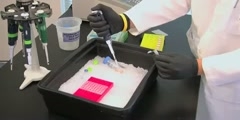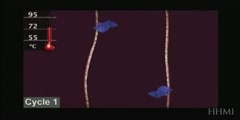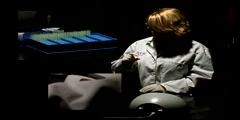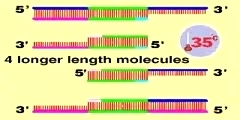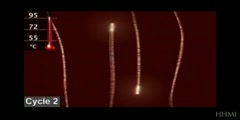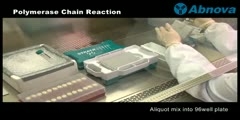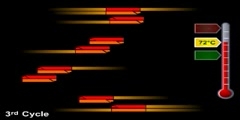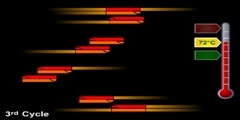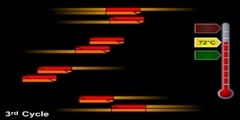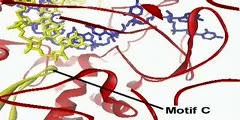Polymerase Chain Reaction (PCR) and how it works
This video contains the description of polymerase chain reaction (PCR) Polymerase chain reaction (PCR) allows researchers to amplify DNA in a test tube. This process uses an enzyme derived from heat-resistant bacteria. The steps of PCR are driven by changes in temperature. Originally created for DNA Interactive ( http://www.dnai.org ). TRANSCRIPT: Polymerase chain reaction (PCR) is a process where many copies of a specific piece of DNA can be made. This is known as amplification. Double-stranded DNA (red) unwinds and separates when the temperature is increased. As the temperature is decreased, small starter sequences called primers (glowing) can attach or anneal to the DNA. These primer sequences are usually only 20 to 25 nucleotides long, and are designed to match the start and end points of the DNA piece to be amplified. Once the primers have annealed, Taq polymerase (blue) copies the DNA starting from the primer. The temperature is increased; the strands separate; more primers anneal; the DNA is copied; and this cycle is repeated many times. In a typical PCR reaction there are 30 cycles, which can potentially create one billion copies starting from one molecule of DNA.
Channels: Genetics
Tags: Polymerase chain reaction PCR
Uploaded by: juliarobertscool ( Send Message ) on 11-10-2012.
Duration: 1m 27s

